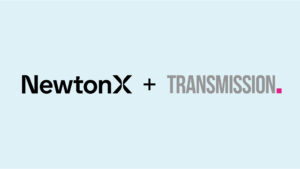How market research can support mergers and acquisitions

Leveraging B2B research and insights can aid in successful M&A.
When a company considers a merger or acquisition for long-term growth, expansion, diversification, and other business objectives, it gathers data and insights on possible partners and ultimately short-lists candidates. The process of due diligence in pre- and post-acquisition phases needs to be transparent, accurate, and comprehensive. It is also important to understand your new venture in terms of growth opportunities, market access, and competitive landscape. A successful merger or acquisition accounts for potential future disruption, technology advancements, market trends, and competition.
However, the traditional approaches to due diligence often leave some questions unanswered and gaps in the data and insights obtained. These gaps may be identified in the data room phase which can lead to delays, missed opportunities, or poor decision-making. In the worst-case scenario, major gaps remain unidentified and lead to unsuccessful business decisions. The most successful mergers and acquisitions involve custom B2B market research in addition to traditional due diligence, both pre- and post-acquisition.
Types of pre-acquisition due diligence
Competitive benchmarking
Competitive benchmarking is a process in which you analyze your competitors to determine how they achieve their competitive advantage. The analysis helps identify what your organization can do to improve its performance and achieve a competitive advantage.
Mergers or acquisitions can be costly and risky. In fact, it’s well known that most acquisitions destroy value. Research by the National Bureau of Economic Research shows that shareholders lose on average 5.9 cents per dollar spent on acquiring a public firm. It’s challenging to be in the minority of acquirers that create sustained value and competitive advantage with acquisitions.
Competitive benchmarking helps a company understand the broader landscape in which they’re doing business. As a result, it plays a huge part in allowing a company to make informed decisions about when to consider a merger or acquisition. You need to be aware of how your potential merger will impact your performance vs. your current competitors’. Additionally, you need to be aware of how the company you wish to acquire performs in relation to its competitors.
B2B research is useful in competitive benchmarking because it can put you in touch with the professionals most qualified to explain your competitors’ performance Your employees can undoubtedly offer useful analysis of your competitors but will inevitably have some amount of bias.
Say you’re considering buying a company in a different field than your own. Your employees won’t know the industry of your shortlisted/target company as well as your industry. It’s best to ask professionals in the targeted industry: they’re in the thick of it, and you aren’t. So, to fill that deficit, you need them to help you with your benchmarking. Professionals from outside your company offer a comparatively objective look at your competitors’ performance and your ability to benefit from a merger or acquisition.
Market access
Market access is a company’s ability to sell and market their products or services across borders. When considering a merger or acquisition that will result in your company entering a new market in a new country, understanding how operating in that new company will change your options and practices is a must. B2B market research can put you in touch with experts on the new market.
For example, say a global advertising giant wants to buy a local ad agency with great clients, reputation, and cultural awareness within a specific region. B2B research could help benchmark how that agency is viewed compared to other agencies in that market.
Industry trends
Understanding broad trends in your industry gives you a better idea of what the potential downstream consequences of a merger or acquisition will be. Conducting B2B research can let you speak directly to the influencers and professionals who have their ears to the ground, the people who know what the next big thing will be before it happens.
A successful merger or acquisition also accounts for potential future disruption, technology advancements, market trends, and competition. Accounting for larger trends in your industry is essential when considering a merger or acquisition. Otherwise, you won’t be able to account for downstream consequences.
Current & former employees
B2B research can include surveying or interviewing current and former employees of a company you’re considering acquiring or merging with. Hearing the accounts of current and former employees lets you understand more intimate details about the company’s operations and performance that might not be easily obtainable otherwise.
Brand perception
B2B research can also be used to interface with professionals across your industry to gauge brand perception. “Brand perception” is how customers think about a product or service, regardless of whatever the company behind it says.
Customer attitudes toward a company you’re considering acquiring or merging with, and their products or services, will affect how the merger or acquisition is perceived. In one example, NewtonX research on cybersecurity shows that 73 percent of decision makers rank word of mouth as one of their top external influences on how they evaluate vendors. If people leave negative reviews of your target company with their peers, you want to know about this before you buy them . If people say, “this company is the future of the industry” or “this company is leading the way,” that’s a good sign.
Product-market fit
Product-market fit is a measure of how well a product or service satisfies demand in the market. When acquiring an early-stage startup that is still growing, an acquirer needs to know whether the current and future products of that startup are actually a good fit for the needs of the market.
The acquirer can’t just look at current sales, growth, and current customer satisfaction. This is because it’s impossible to know when sales will plateau or whether future customers will be as satisfied as early adopters.
To figure out the market size and the degree of product-market fit, companies have a lot of questions to answer. How prevalent is the pain they’re addressing with their products? How serious is the pain? And how unique is the product from the eyes of potential customers? Is it valuable enough that they’d take their chances buying from a startup rather than an established competitor? And they must consider all these questions not only for current products of the target-company, but future products in their pipeline. B2B market research provides the answers an acquirer desperately needs.
Types of post-acquisition due-diligence and optimization
Brand perception & awareness
Being aware of how customers perceive your brand or the brand of the company you’re acquiring or merging with isn’t just important prior to the merger or acquisition. Knowing how customer sentiments change post-merger or acquisition is just as valuable.
Say a massive conglomerate acquires a start-up in an industry they haven’t entered before. Are the professionals working across that industry interested and excited to see how this shakes business up across their industry? Are they concerned that the change augurs more aggressive encroachments to come from other companies from outside their industry? It’s impossible for the conglomerate to know without conducting B2B market research.
Product innovation
After a merger or acquisition, a company has more resources at its disposal. However, it can be difficult to identify where those new resources should be directed. And understanding how best to use them — what new products to develop or features to add to existing products — is essential for success.
Your new resources mean there are new customer problems you’ll be able to fix with your offerings. Conducting B2B market research to get in touch with professionals across your industry (or the industry of the company you’ve merged with or acquired, if they differ) will let you identify what those problems are and how best to fix them. Companies navigating the current hiring crunch must assess how they rank among their peers in hiring. NewtonX can help you assess whether your target company is viewed as a place high-performers want to work in.
Employer brand
An acquisition can be a nail-biting process for the employees of the acquired company. The company acquiring it should develop retention plans as soon as possible — even before the acquisition is finalized. A critical factor to talent retention is a company’s employer branding and reputation.
Employer reputation surveys can also provide critical information to a firm assessing potential acquisitions. A target firm that has a solid product but that has a poor reputation with talent will likely face more challenges than one with a solid reputation. Research from Gartner shows that a new top tier of employers is emerging. These companies treated their employees well in the course of the Covid-19 pandemic. Formerly top-ranked employers who didn’t support employees as well have suffered.
Market expansion
A successful merger or acquisition will open new avenues for business cases. Companies will be able to broaden the scope of their offerings in one market, or potentially even enter new markets. However, identifying how you should expand isn’t always easy.
This is particularly important when entering a new industry. You won’t be as familiar with what works in a new field, or where things are predicted to go. Questions about these matters can’t be answered by your employees, but they’re essential nonetheless. To answer them, you can conduct B2B surveys or interviews aimed at professionals outside your company. Doing so can help identify new avenues opened by a merger or acquisition.
Voice of customer
After a merger or acquisition, and the consequent changes to your business practices or offerings, it’s probable that the feelings and opinions of your existing customers will change concurrently. Additionally, you’ll have a new set of customers — those of the company you’ve merged with or acquired. You’ll need to be aware of their needs, wants, and experiences too.
Conducting regular B2B research aimed at understanding the voice of your customers is essential for continued success. If a company notices an uptick in sales of a particular product after a merger or acquisition, talking to customers will let them understand why. As a result, they’ll be able to maintain or even improve upon that sales boost. Conversely, if sales fall in one quarter, talking to customers will help identify how to avoid future declines.
Competitive intelligence
Keeping up with your competitors is just as important after a merger or acquisition as before one. After a merger or acquisition, it’s possible you’ll have an entirely new group of competitors to account for. Your company will need to have a more in-depth understanding of which competitors are winning which specific details and why.
Talking to current or former employees of your competitors, and to influencers in your industry more broadly, will help you to identify which areas your customers excel in, and which areas you can focus on to keep ahead of them. And B2B market research is the best way to get in touch with those professionals.
How NewtonX can help
As the world’s leading B2B market research company, NewtonX is uniquely suited to help your company navigate a merger or acquisition. We use a proprietary, AI-driven search that scans 1.1 billion professionals across 140 industries to find the exact person to answer any kind of question. We can identify professionals — lost leads, former customers, competitors’ customers, etc. — based on the specific requirements and criteria needed by M&A teams to gather insights on a range of topics from the exact individuals who possess the experience, knowledge, and first-hand insights.
Whether you need a quantitative survey to gauge brand perception or in-depth interviews with the people most qualified to advise you on your merger or acquisition, NewtonX can provide the right people with a fast turnaround, verified professionals, and 100% fraud free data guaranteed.
Sign up for our newsletter, NewtonX Insights:
Related Content
Why is B2B market research so important?
B2B market research provides companies with the vital data that allows them to grow and succeed. Today, as many companies struggle to pick up the pieces left after Covid-19 shattered workplace and economic norms, the
read moreThe top questions to ask on your B2B market research survey
The utility of a survey is heavily dependent on the quality of the B2B market research questions it poses. The professionals who take B2B surveys don’t have the time to complete surveys full of redundant
read moreProduct development market research methods
Product development market research is the best way to ensure that a company brings their product to market or communicate new features successfully. Before investing time, energy and money behind a launch, product marketers look
read more
















![[Webinar Recap] Is B2B ready for synthetic sample? Yes – if you know how to augment it](https://www.newtonx.com/wp-content/uploads/2024/10/Webinar-synthetic-sample-greenbook-1024-1920px-feature-image-1-300x169.jpg)
![[Webinar Recap] The future of B2B research starts with the death of panels](https://www.newtonx.com/wp-content/uploads/2024/07/TKH-8.22-Karine-Pepin-webinar-1920px-feature-image-300x169.jpg)
![[Webinar Recap] Ditch the Bad Data with Greenbook’s Lenny Murphy as Your Guide](https://www.newtonx.com/wp-content/uploads/2024/05/tkh-greenbook-newtonx-lenny-murphy-cutting-research-cost-speakers-v-21920px-feature-image-300x169.jpg)